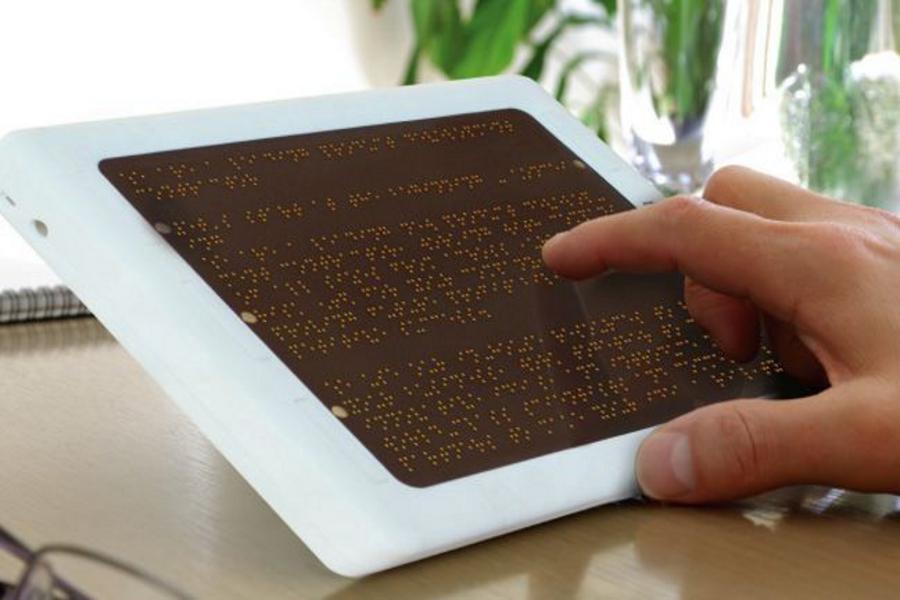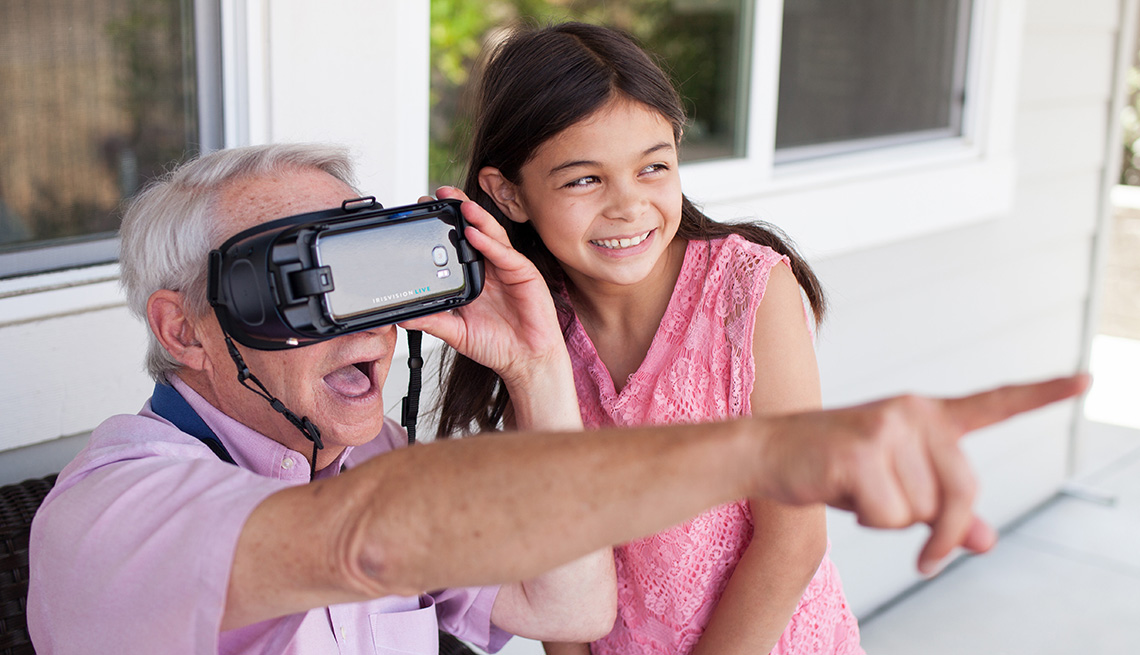Braille Displays and Notetakers: Key Tools for Learning and Work
Wiki Article
An Overview to Life-Changing Assistive Modern Technology for the Blind and Visually Damaged
The improvement of assistive innovation has introduced a transformative period for individuals that are blind or visually impaired, offering devices that improve autonomy and improve daily experiences. Developments such as smart navigating tools and AI-driven applications are redefining how individuals communicate with their environments, while available reading remedies and smart home technologies guarantee to more raise the quality of life. As these innovations proceed to progress, one must take into consideration not just their functionalities but likewise their influence on promoting self-reliance and inclusivity. What does this mean for the future of access?Smart Navigating Devices
Smart navigating devices are revolutionizing the method individuals that are aesthetically damaged or blind connect with their environment. These innovative technologies, which incorporate general practitioners, audio feedback, and haptic signals, supply individuals with important details about their surroundings, improving their freedom and wheelchair.
One prominent instance is the use of smart canes equipped with sensors that discover challenges and supply real-time comments with vibrations or audio cues. These devices enable users to navigate complicated atmospheres, such as busy streets or crowded public rooms, with boosted confidence. Additionally, wearable devices, such as wise glasses, are being created to assist in acknowledging faces, reviewing message, and recognizing items, additionally boosting the individual's spatial recognition.
Additionally, smart navigating tools are increasingly including fabricated intelligence to analyze data and adjust to customers' choices. This individualized approach not just boosts navigation performance yet also cultivates a feeling of empowerment amongst customers. As modern technology remains to breakthrough, the possibility for clever navigation devices to create an extra accessible and comprehensive world for individuals that are blind or visually impaired continues to be appealing, inevitably reshaping their daily experiences and interactions.
Ingenious Mobile Applications
Mobile applications are becoming powerful tools for assisting people who are visually damaged or blind, offering a series of capabilities that improve daily living. These apps harness progressed technology to assist in daily jobs, improve availability, and promote independence.One classification of cutting-edge mobile apps concentrates on aesthetic recognition. Applications like Be My Eyes link users with sighted volunteers by means of video clip calls, enabling real-time help for jobs such as reviewing tags or navigating unfamiliar settings. Apps like Seeing AI use synthetic knowledge to describe surroundings, read message, and recognize things, giving customers with critical information at their fingertips.
An additional considerable location is navigation and alignment. Applications such as Aira and Close-by Traveler give audio assistance, aiding customers navigate urban rooms easily. They provide customized assistance, allowing for an extra certain expedition of the setting.
In addition, health and health applications cater to details demands, such as medicine administration and fitness monitoring. These applications intend to promote a holistic approach to well-being, guaranteeing that customers can maintain their wellness separately.
Wearable Assistive Instruments
Wearable assistive tools represent a considerable innovation in modern technology made to sustain people that are visually damaged or blind. These tools improve mobility and freedom by giving real-time feedback regarding the surrounding setting. Amongst one of the most noteworthy wearable modern technologies are wise glasses outfitted with video cameras and sensors, which can identify barriers and relay essential information with audio cues.
An additional ingenious alternative consists of wrist-worn gadgets that use ultrasonic waves to identify barriers and supply navigational support. These tools often include customizable setups, allowing users to tailor the alerts to their particular needs.
The assimilation of expert system in wearable assistive modern technology is additionally notable, as it continuously improves the precision and responsiveness of these tools. In general, wearable assistive devices are changing the lives of the aesthetically impaired and blind, cultivating greater freedom and improving top quality of life through cutting-edge remedies.
Accessible Checking Out Solutions
Available reading services play an important duty in allowing people that are blind or aesthetically impaired to involve with message throughout different layouts. These solutions include a variety of innovations and tools designed to enhance reading experiences, from traditional print products to digital web content.One noticeable remedy is Optical Personality Acknowledgment (OCR) modern technology, which transforms printed text into electronic format, permitting users to pay attention to or read the content using screen visitors. Additionally, specialized e-readers equipped with text-to-speech abilities offer adjustable analysis experiences, enabling users to adjust font sizes and history colors for improved exposure.
One more efficient technique is braille screens, which supply responsive feedback by transforming electronic message right into braille. This enables individuals to review via touch, fostering higher freedom and access to literature. Moreover, mobile applications designed for checking out scanned publications or records can encourage customers with immediate access to a huge collection of materials.

Smart Home Technologies
Smart home technologies have reinvented the means people who are visually impaired or blind interact with their living atmospheres, boosting both independence and safety and security. These innovative remedies leverage automation and connection to create an accessible home customized to the demands of users.Smart speakers and voice-activated assistants give hands-free control over different tools, enabling users to readjust safety and security, lighting, and temperature level procedures through basic voice commands. This performance minimizes dependence on sighted assistance and fosters a sense of freedom. Additionally, smart illumination systems can be tailored to provide auditory responses or responsive cues, making it possible for individuals to navigate their homes better.
Furthermore, safety and security systems geared up with wise electronic cameras and sensing units can send real-time alerts to customers, improving personal safety without demanding Voice-activated assistive devices visual verification. Automated door locks use satisfaction, permitting individuals to protect their homes easily.
Integrating clever home innovations not only boosts everyday living but additionally encourages social communication with linked tools - AI-powered visual aids. With ongoing innovations in assistive technology, the future appears encouraging, as more solutions will arise to more encourage people who are blind or aesthetically impaired, guaranteeing a more independent and comprehensive way of living
Conclusion
In verdict, the developments in assistive technology for the aesthetically impaired and blind represent a significant jump towards boosting self-reliance and lifestyle. Smart navigating devices, cutting-edge mobile applications, wearable devices, easily accessible analysis remedies, and smart home modern technologies collectively cultivate an inclusive atmosphere. This integration of modern technology not just enhances mobility and day-to-day living however likewise empowers individuals to engage fully with their surroundings, promoting greater freedom and participation in society.
Developments such as wise navigating devices and AI-driven applications are redefining exactly how customers connect with their surroundings, while easily accessible analysis solutions and smart home technologies promise to additional boost the top quality of life. As technology continues to breakthrough, the possibility for clever navigation devices to create a more accessible and inclusive world for people who are aesthetically impaired or blind remains appealing, eventually improving their day-to-day experiences and communications.
Wearable assistive gadgets stand for a considerable innovation in technology developed to support people who are visually damaged or blind. Among the most remarkable wearable modern technologies are clever glasses equipped with video cameras and sensing units, which can determine barriers and relay vital details via audio hints.
Smart navigation devices, ingenious mobile applications, wearable tools, accessible reading services, and smart home modern technologies jointly cultivate an inclusive environment.
Report this wiki page